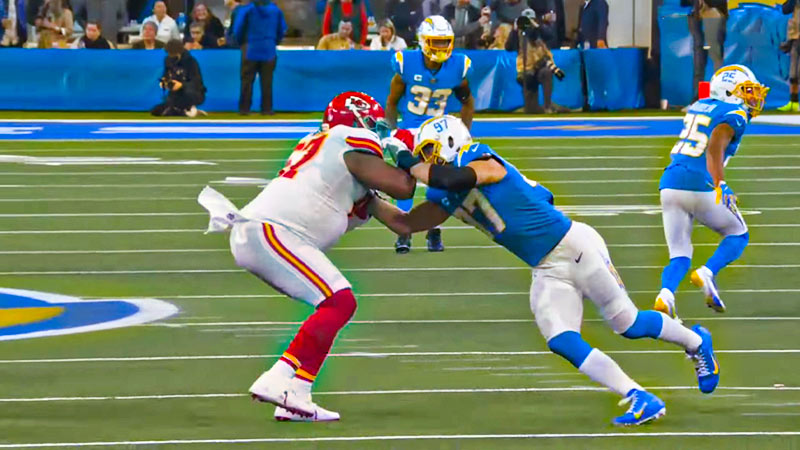Football is a thrilling and dynamic sport that captivates fans around the world with its fast-paced action, strategic plays, and intense rivalries. Amidst the excitement of touchdowns and field goals, there’s another aspect of the game that plays a crucial role in shaping outcomes – penalties.
Penalties serve as a regulatory mechanism to ensure fair play and sportsmanship on the field. In this comprehensive guide, we’ll delve into the realm of football penalties, specifically focusing on 10-yard penalties.
From the nuances of offside infractions to the intricacies of intentional grounding, we’ll unravel the key details of some of the most significant penalties that can have a substantial impact on the game.
List of NFL 10-Yard Penalties
Here is the list of the 10 most important NFL 10-yard penalties that you should know about.
1. Assisting The Runner
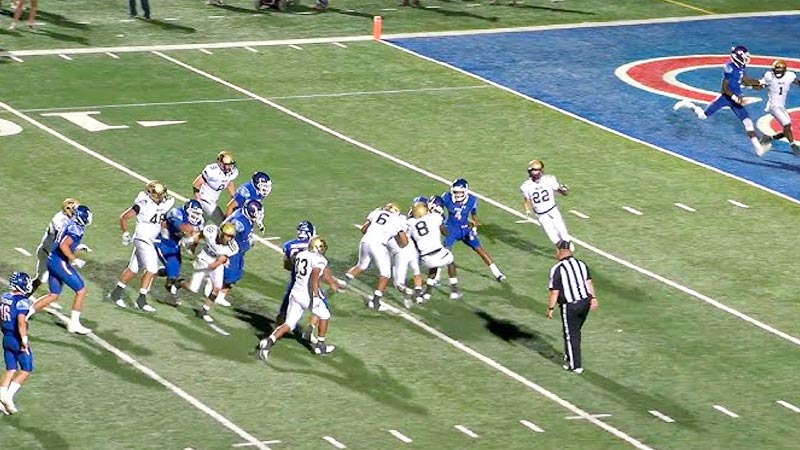
Assisting the runner is a penalty that occurs when a player or multiple players from the offensive team aid the ball carrier’s forward progress by pushing or pulling them.
This can happen if, for example, offensive linemen push the runner from behind or teammates actively help the runner gain more yards by physically assisting in their movement.
Assisting the runner is considered unfair and against the spirit of the game, as it gives the offensive team an unfair advantage. The penalty results in a 10-yard loss from the spot of the foul and a replay of the down.
2. Illegal Bat
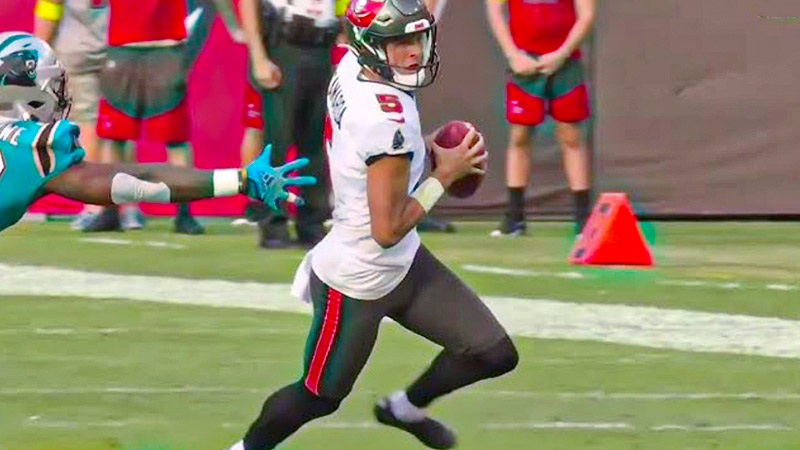
The illegal bat penalty is called when a player deliberately strikes or bats the ball with their hand or arm in an attempt to alter its position on the field. This typically occurs when a fumble or a loose ball is in play.
Players are not allowed to intentionally bat the ball forward, and doing so results in a 10-yard penalty from the spot of the foul and a loss of down. This penalty discourages players from using unfair tactics to manipulate the ball’s location to their advantage.
3. Illegal Block Above The Waist
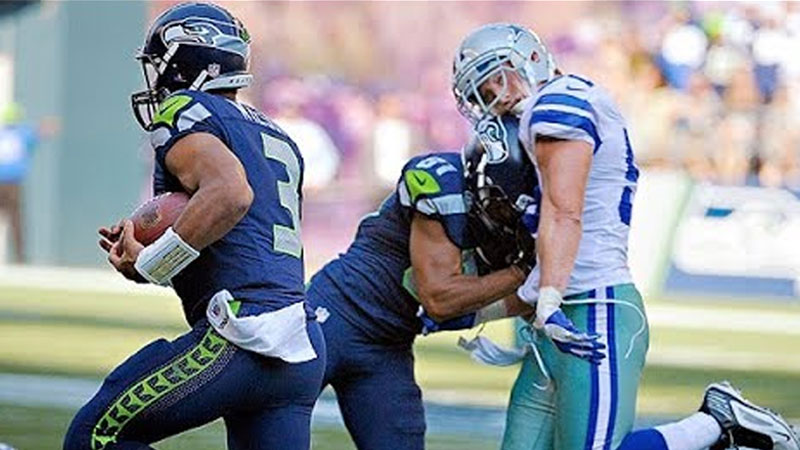
An illegal block above the waist penalty is assessed when a player on either the offensive or defensive team blocks an opponent above the waist in a manner that is deemed illegal.
This usually involves using hands, arms, or shoulders to make contact above the waistline of the opponent. Such blocks can be dangerous and may lead to injuries.
The penalty results in a 10-yard setback from the spot of the foul and a replay of the down, highlighting the importance of safe and fair blocking techniques.
4. Tripping
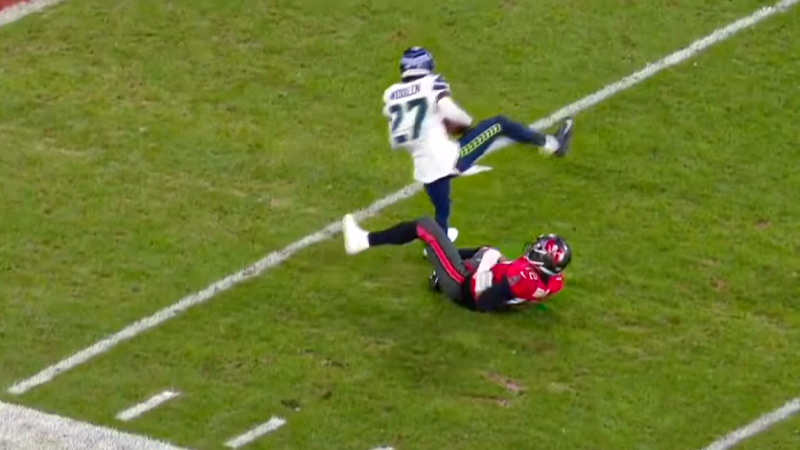
Tripping is a penalty called when a player uses their leg, foot, or lower leg to trip an opponent. This action is considered dangerous and against the rules, as it can cause players to fall and potentially get injured.
The penalty results in a 10-yard loss from the spot of the foul and a replay of the down. Tripping is strictly prohibited to maintain player safety and ensure fair play.
5. Illegal Use of Hands
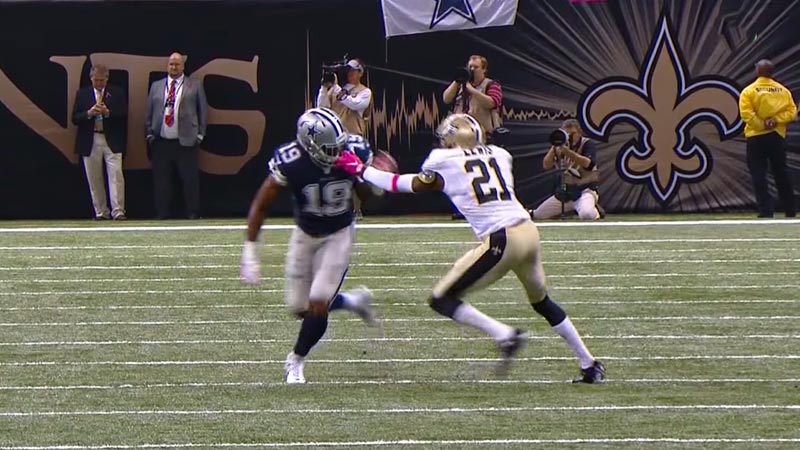
This penalty occurs when a player uses their hands or arms in an illegal manner to obstruct or impede an opponent. It typically involves a defensive player using their hands to grab, hold, or push an offensive player beyond the legal contact limits.
This penalty is usually called on defensive players, especially those in coverage against receivers, and it results in a 10-yard penalty and an automatic first down for the offense.
6. Intentional Grounding
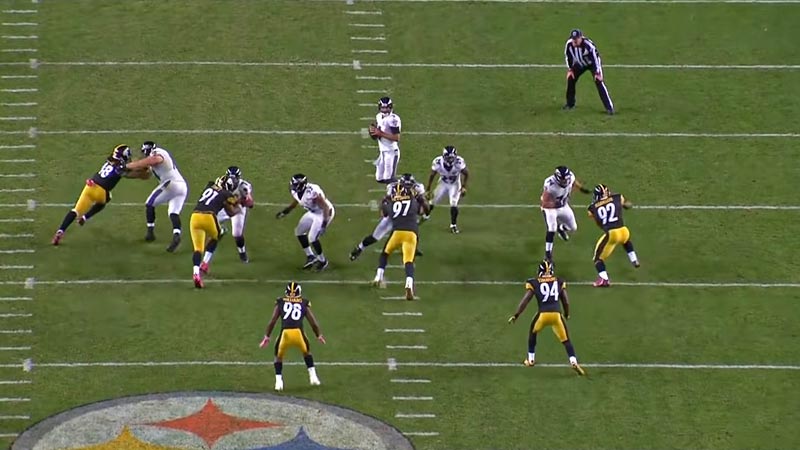
Intentional grounding is called when a quarterback, under pressure from the opposing defense, throws the ball incomplete to avoid a sack without a reasonable chance of the pass being completed to an eligible receiver.
The quarterback must be outside of the tackle box (the area between the tackles) and the ball must cross the line of scrimmage to avoid this penalty. If intentional grounding is called, it results in a loss of down and a 10-yard penalty from the spot of the foul.
7. Offensive Holding
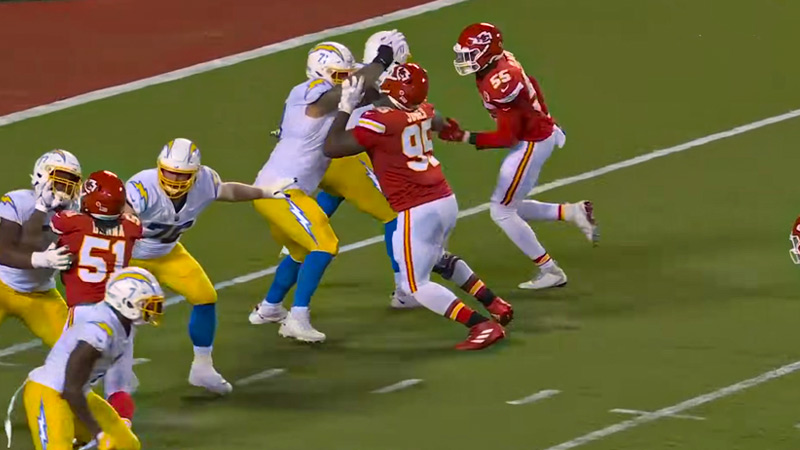
Offensive holding is called when an offensive player uses their hands, arms, or body to impede the progress of a defensive player.
This penalty often occurs during running plays or passing plays when an offensive lineman holds a defensive lineman or linebacker to prevent them from making a play. It results in a 10-yard penalty from the spot of the foul and a replay of the down.
8. False Start
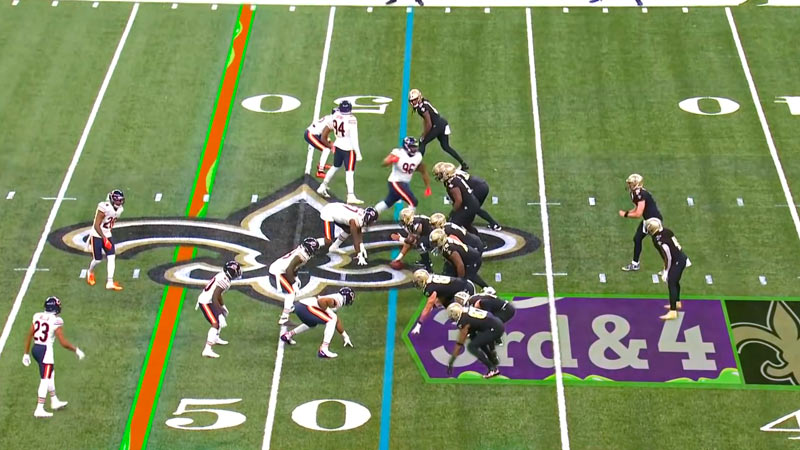
A false start penalty occurs when an offensive player, usually an offensive lineman, makes a sudden movement or flinch before the ball is snapped.
This movement can be a shift in position, lifting the hand off the ground, or any other abrupt motion that simulates the start of the play. False start penalties are typically called to prevent unfair advantages and result in a 5-yard penalty against the offense.
9. Offensive Pass Interference
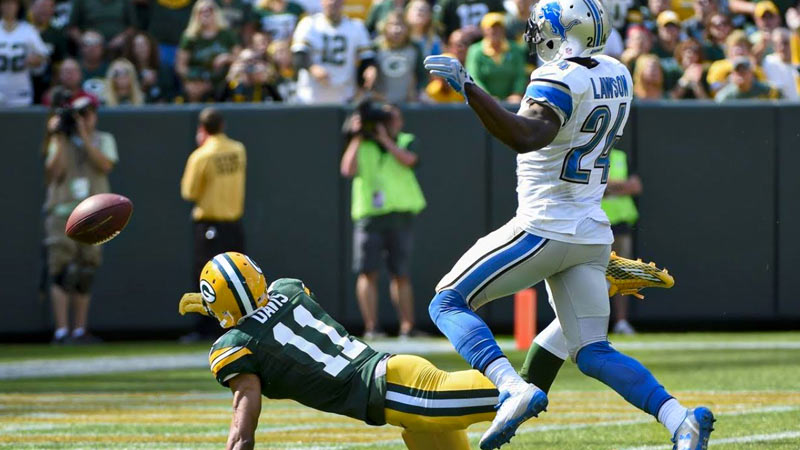
Offensive pass interference is called when an offensive player interferes with a defensive player’s ability to make a play on the ball while the ball is in the air.
This penalty is often called against a receiver who pushes, shoves, or impedes a defender’s ability to make a play on the ball. It results in a 10-yard penalty from the previous line of scrimmage and a loss of down, meaning the offense will have to replay the down.
10. Illegal Block In The Back
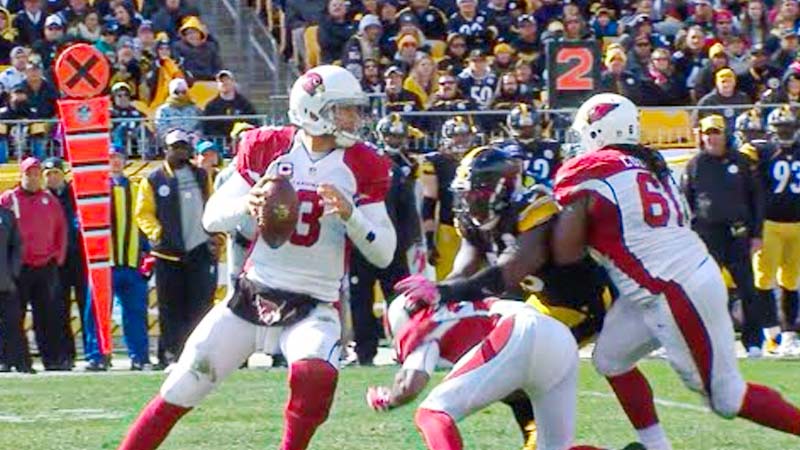
An illegal block in the back penalty occurs when a player from the blocking team makes contact with an opponent from behind and pushes or blocks them in a way that disrupts their forward motion. This often happens during kick returns or when the ball changes possession.
The penalty is assessed as a 10-yard infraction from the spot of the foul and can lead to significant field position changes. The rule aims to prevent unnecessary and potentially dangerous contact that could affect the outcome of a play.
These penalties are enforced to maintain fair competition, prioritize player safety, and ensure that the game is played within the established rules and guidelines.
List of NCAA 10-Yard Penalties
Even though there are lots of similarities in the 10-yard penalties in the NFL and NCAA, they have distinctions in significance too. Here are the top 10 NCAA 10-yard penalties.
1. Illegal Block in the Back
An illegal block-in-the-back penalty occurs when a player from the blocking team initiates contact against an opponent by hitting them in the back. This penalty is typically called during kickoffs, punts, and other plays involving open-field running.
It aims to prevent players from gaining an unfair advantage by pushing or blocking opponents from behind, which can lead to dangerous and potentially injurious situations.
2. Offensive Pass Interference
Offensive pass interference is called when an offensive player interferes with a defensive player’s ability to make a fair and unobstructed attempt to catch a forward pass.
This can involve pushing off, blocking, or otherwise impeding the defender’s ability to make a play on the ball. Offensive pass interference results in a 10-yard penalty and loss of down.
3. Defensive Pass Interference
Defensive pass interference occurs when a defensive player interferes with an eligible receiver’s ability to make a catch by impeding their movement or initiating contact before the ball arrives.
This penalty is often called to prevent defenders from gaining an unfair advantage by hindering the receiver’s ability to make a play. Defensive pass interference results in a 10-yard penalty and an automatic first down for the offense.
4. Face Mask Penalty
A face mask penalty is called when a player grabs, twists, or pulls the face mask of an opponent during a play. This penalty is intended to protect player safety by preventing potential neck and head injuries.
There are two levels of face mask penalties: incidental face mask (5-yard penalty) and major face mask (15-yard penalty). The major face mask penalty occurs when the grabbing of the face mask is more severe and dangerous.
5. Targeting
Targeting is a serious penalty aimed at protecting player safety. It occurs when a defensive player intentionally strikes an opponent above the shoulders with the crown of their helmet or makes forcible contact with the head or neck area of a defenseless opponent.
Targeting results in a 15-yard penalty, and the player committing the penalty may be ejected from the game, depending on the severity of the hit.
6. Offside
Offside occurs when a defensive player crosses the line of scrimmage and makes contact with an offensive player before the ball is snapped.
This penalty is usually called when a defensive player is trying to time the snap count and gets a head start on the play. The penalty results in a 5-yard gain for the offense and a replay of the down.
7. Illegal Formation
An illegal formation penalty is called when the offense does not align properly before the snap.
This can involve having the wrong number of players on the line of scrimmage or having ineligible receivers (like offensive linemen) positioned too far downfield. The penalty results in a 5-yard loss and a replay of the down.
8. Illegal Substitution
Illegal substitution is called when a team makes an unauthorized player substitution, often resulting in more than 11 players on the field at the snap.
It can also occur if a player enters the field and does not come to a complete stop before the snap. The penalty results in a 5-yard loss and a replay of the down.
9. Intentional Grounding
Intentional grounding is a penalty called against the quarterback when they deliberately throw the ball away to avoid a sack, without a reasonable chance of completing a pass to an eligible receiver.
The quarterback must be outside the tackle box and the pass must cross the line of scrimmage to avoid this penalty. Intentional grounding results in a 10-yard loss and loss of down.
10. Tripping
Tripping is called when a player uses their leg or foot to trip an opponent. It’s a dangerous and unsportsmanlike act that can result in serious injury.
Tripping penalties can be called on both offensive and defensive players. The penalty results in a 10-yard loss and a replay of the down.
These penalties serve to maintain fairness and sportsmanship in the game, ensuring that players adhere to the established rules and regulations. The yardage loss associated with each penalty serves as a deterrent to prevent teams from gaining an unfair advantage through rule violations.
FAQs
What is an offside penalty in football?
An offside penalty occurs when a defensive player crosses the line of scrimmage before the ball is snapped, making contact with an offensive player. This infraction results in a 5-yard gain for the offense and a replay of the down.
How does an illegal formation penalty affect the game?
Illegal formation penalties are called when the offense does not align properly before the snap. This can involve having an incorrect number of players on the line of scrimmage or ineligible receivers positioned incorrectly. The penalty results in a 5-yard loss and a replay of the down.
What constitutes an illegal substitution in football?
An illegal substitution occurs when a team makes an unauthorized player substitution, often resulting in more than 11 players on the field at the snap. This penalty leads to a 5-yard loss and a replay of the down.
What is intentional grounding, and why is it penalized?
Intentional grounding is a penalty called against the quarterback when they throw the ball away to avoid a sack without a reasonable chance of completing a pass to an eligible receiver. This results in a 10-yard loss and loss of down, discouraging quarterbacks from exploiting this tactic.
When is a tripping penalty enforced in football?
Tripping penalties are called when a player uses their leg or foot to trip an opponent, endangering their safety. It is a grave offense and results in a 10-yard loss and a replay of the down.
Wrapping Up
Understanding football penalties is essential for players, coaches, and fans alike. The intricate web of rules and regulations ensures that the game is played fairly and with respect for the opponent.
10-yard penalties play a significant role in shaping the ebb and flow of the game, emphasizing the importance of discipline and adherence to the rulebook.
As the excitement of each game unfolds, keep an eye out for these penalties – they might just be the game-changers that tip the balance in favor of one team or another.

